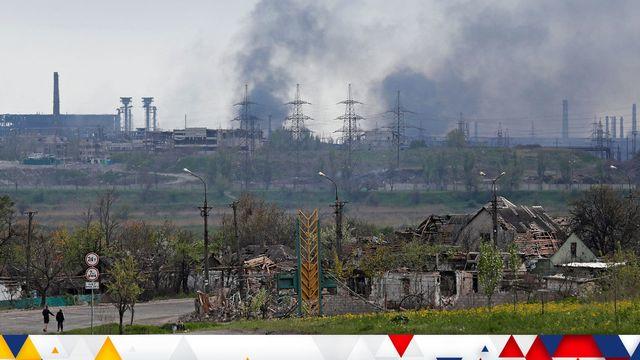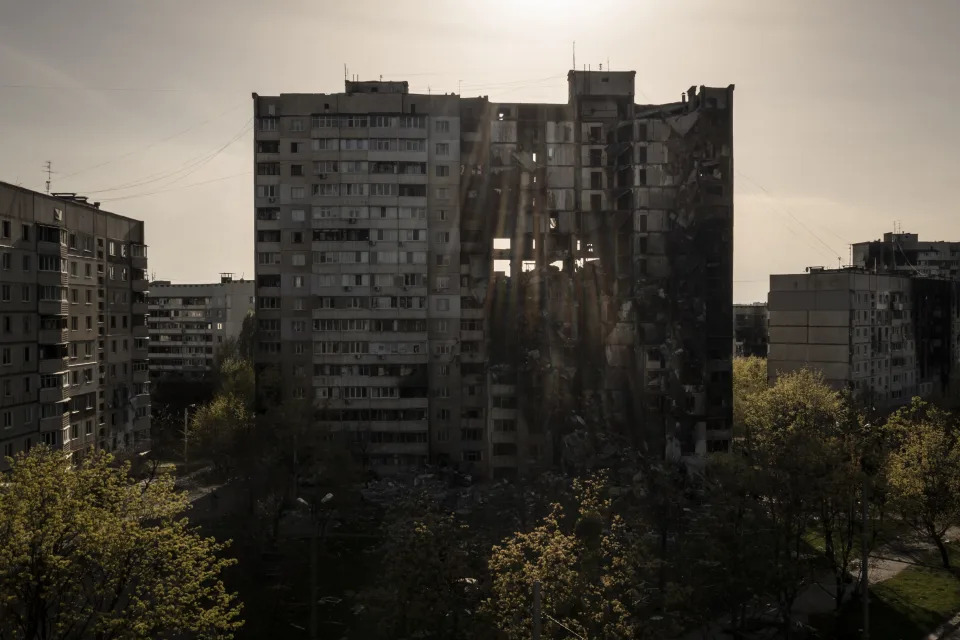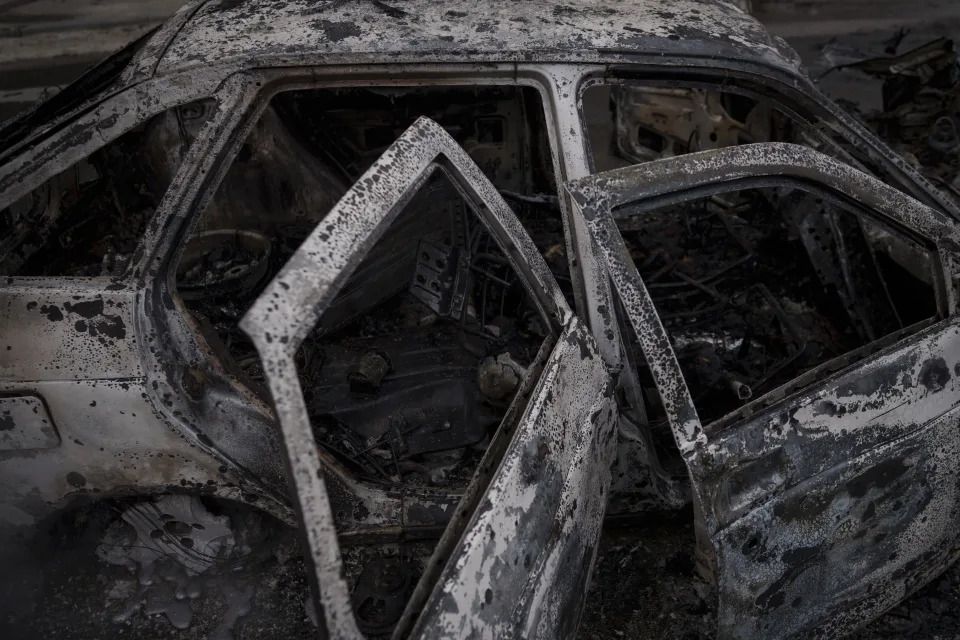The New York Times – Opinion
A Message to the Biden Team on Ukraine: Talk Less
By Thomas L. Friedman – May 3, 2022

Growing up in Minnesota, I was a huge fan of the local N.H.L. team at the time, the North Stars, and they had a sportscaster, Al Shaver, who gave me my first lesson in politics and military strategy. He ended his shows with this sign-off: “When you lose, say little. When you win, say less. Goodnight and good sports.”
President Biden and his team would do well to embrace Shaver’s wisdom.
Last week, in Poland, standing near the border with Ukraine, U.S. Defense Secretary Lloyd Austin got my attention — and certainly Vladimir Putin’s — when he declared that America’s war aim in Ukraine is no longer just helping Ukraine restore its sovereignty, but is also to produce a “weakened” Russia.
“We want to see Russia weakened to the degree that it can’t do the kinds of things that it has done in invading Ukraine,” he said. “So, it has already lost a lot of military capability. And a lot of its troops, quite frankly. And we want to see them not have the capability to very quickly reproduce that capability.”
Please tell me that this statement was a result of a National Security Council meeting led by the president. And that they decided, after carefully weighing all the second- and third-order consequences, that it is in our interest and within our power to so badly degrade Russia’s military that it will not be able to project power again — soon? ever? not clear — and that we can do that without risking a nuclear response from a humiliated Putin.
Have no doubts: I hope that this war ends with Russia’s military sharply degraded and Putin out of power. I’d just never say so publicly if I were in leadership, because it buys you nothing and can potentially cost you a lot.
Loose lips sink ships — and they also lay the groundwork for overreach in warfare, mission creep, a disconnect between ends and means and huge unintended consequences.
There has been way too much of this from the Biden team, and the messes have required too much mopping up. For instance, a short time after Austin’s statement, a National Security Council spokesperson said, according to CNN, that the secretary’s comments reflected U.S. goals, namely “to make this invasion a strategic failure for Russia.”
Nice try — but that was a contrived cleanup effort. Forcing Russia to withdraw from Ukraine is not the same as declaring that we want to see it weakened so badly that it can never do this again anywhere — that’s an ill-defined war aim. How do you know when that is achieved? And is it an ongoing process — do we keep degrading Russia?
In March in a speech in Poland, Biden said that Putin, “a dictator, bent on rebuilding an empire, will never erase a people’s love for liberty,” and then the president added, “For God’s sake, this man cannot remain in power.”
In the wake of that statement, the White House contended that Biden “was not discussing Putin’s power in Russia, or regime change,” but rather was making the point that Putin “cannot be allowed to exercise power over his neighbors or the region.”
Another cleanup word salad that just convinces me that the National Security Council didn’t have a meeting that set limits on where U.S. involvement to assist Ukraine stops and starts. Instead, people are freelancing. That’s not good.
Our goal began simple and should stay simple: Help Ukrainians fight as long as they have the will and help them negotiate when they feel the time is right — so they can restore their sovereignty and we can reaffirm the principle that no country can just devour the country next door. Freelance beyond that and we invite trouble.
How so? For starters, I don’t want America responsible for what happens in Russia if Putin is toppled. Because one of three things will most likely result:
(1) Putin is replaced by someone worse.
(2) Chaos breaks out in Russia, a country with some 6,000 nuclear warheads. As we saw in the Arab Spring, the opposite of autocracy is not always democracy — it’s often disorder.
(3) Putin is replaced by someone better. A better leader in Russia would make the whole world better. I pray for that. But for that person to have legitimacy in a post-Putin Russia, it’s vital that it does not appear that we installed him or her. That needs to be a Russian process.
If we get Door No. 1 or Door No. 2, you wouldn’t want the Russian people or the world holding America responsible for unleashing prolonged instability in Russia. Remember our fear of “loose nukes” in Russia after the fall of communism in the 1990s?
We also don’t want Putin to separate us from our allies — not all of whom would sign on for a war whose goal is not just liberating Ukraine but also ousting Putin. Without naming names, Turkish Foreign Minister Mevlut Cavusoglu recently complained that some NATO allies actually “want the war to continue. They want Russia to become weaker.”
Remember: A lot of countries in the world are neutral in this war because, as much as they might sympathize with Ukrainians, they really don’t like to see America or NATO act like a bully — even toward Putin. If this is going to be a long war, and Ukraine is able to recover all or most of its territory, it is vital that this be perceived as Putin vs. the world, not Putin vs. America.
And let’s be careful not to raise Ukrainian expectations too high. Small countries that suddenly get the backing of big powers can get intoxicated. Many things have changed about Ukraine since the end of the Cold War — except one: its geography. It is still, and it will always be, a relatively small nation on Russia’s border. It is going to have to make some hard compromises before this conflict is over. Let’s not make it even harder for it by adding unrealistic goals.
At the same time, be careful about falling in love with a country you could not find on a map with 10 tries a year ago. Ukraine has a history of political corruption and thuggish oligarchs, but it was making progress toward democratic reforms before the Russian invasion. It has not become Denmark in the last three months, although, God bless them, a lot of young people there are really trying, and I want to support them.
But I saw a play in 1982 that I cannot get out of my head. Israelis fell in love with the Christian Phalangists in Lebanon, with whom they teamed up to drive Yasir Arafat’s P.L.O. out of Beirut. Together they were going to remake the Levant but overreached. This led to all kinds of unintended consequences — the Phalangist leader got assassinated; Israel got stuck in the mud in Lebanon; and a pro-Iranian Shiite militia emerged in south Lebanon to resist the Israelis. It was called “Hezbollah.” It now dominates Lebanese politics.
The Biden team has done so well so far with its limited goals. It should stay there.
“The war in Ukraine gave the administration an opportunity to demonstrate the U.S.’s unique assets in the world today: Its ability to forge and hold a global alliance of countries to confront an act of authoritarian aggression; and second, the capacity to wield an economic super weapon in response that only the dominance of the dollar in the global economy makes possible,” explained Nader Mousavizadeh, founder and C.E.O. of Macro Advisory Partners, a geostrategic consulting firm.
If the U.S. can continue to effectively deploy those two assets, he added, “it will vastly improve our long-term power and standing in the world and send a very powerful deterrent message to both Russia and China.”
In foreign affairs, success breeds authority and credibility, and credibility and authority breed more success. Just restoring Ukraine’s sovereignty, and frustrating Putin’s military there, would be a huge achievement with lasting dividends. Al Shaver knew what he was talking about: When you lose, say little. When you win, say less. Everyone can see the score.


 Scroll back up to restore default view.
Scroll back up to restore default view.






